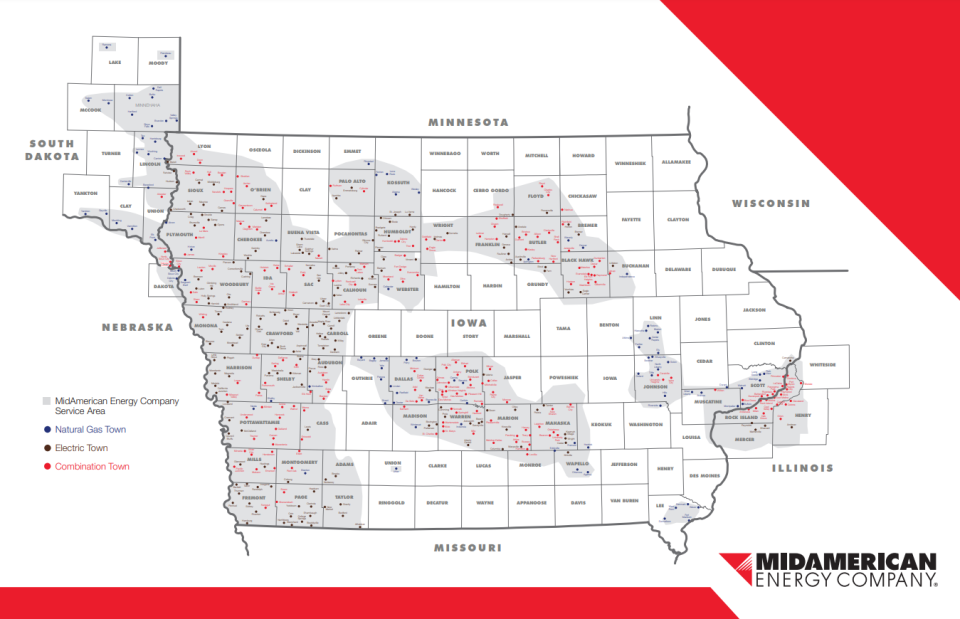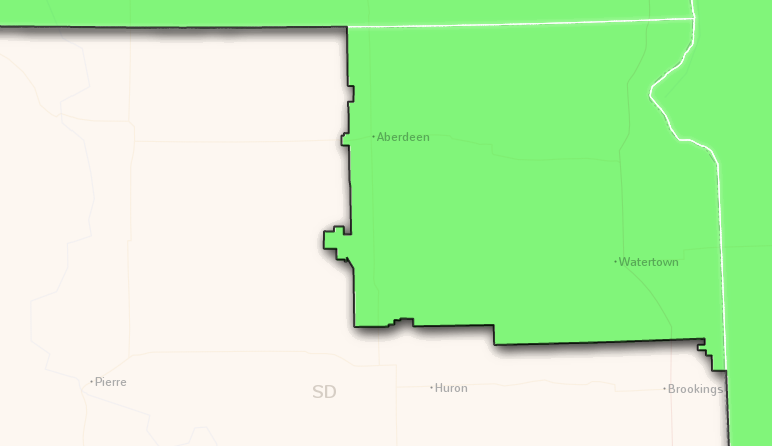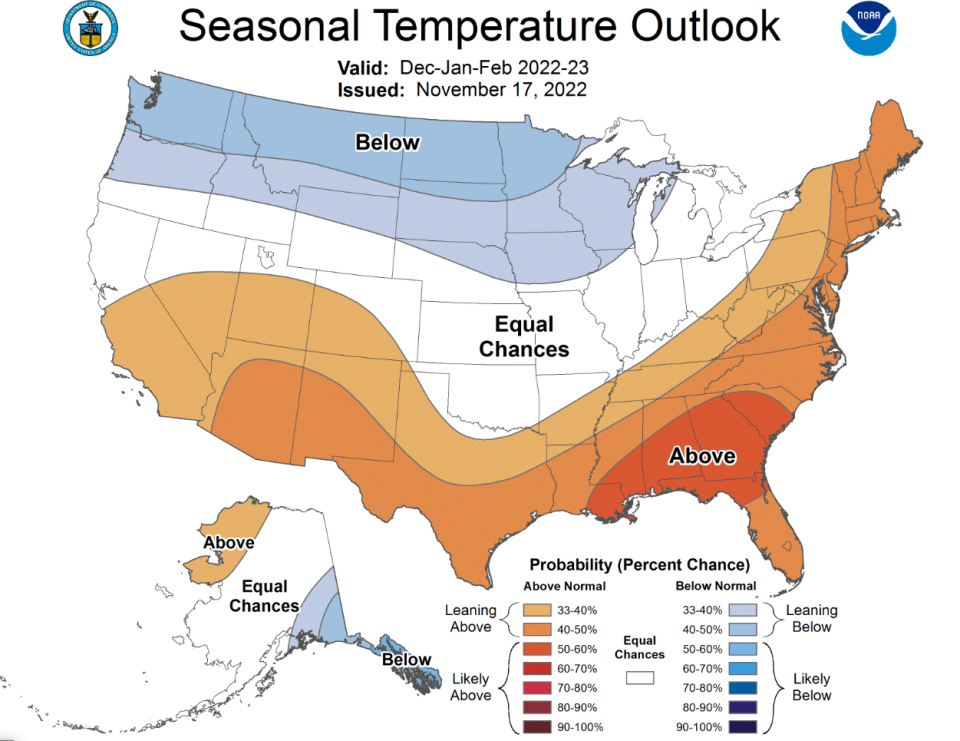Energy shortage, extreme weather could lead to outages in South Dakota this winter
Correction: A previous version of this article incorrectly quoted SDPUC chairman Chris Nelson that 20% percent of electricity in the U.S. was generated via coal-powered plants in past decades. The correct amount, 50%, is now reflected in his quote.
A recent report from a Georgia-based regulatory authority is sounding the alarm on energy supply shortfalls this winter, which could lead to potential power outages throughout the Midwest, including parts of South Dakota.
On Nov. 17, North American Energy Reliability Corporation (NERC), a nonprofit electric grid watchdog, stated in its annual Winter Reliability Assessment that "a large portion of the North American bulk power system is at risk of having insufficient energy supplies during severe winter weather."
Midcontinent Independent System Operator (MISO), a regional electric grid operator, is one of multiple transmission organizations determined to be at higher risk of an energy emergency during peak winter conditions between December and February. The report attributes this vulnerability to the closure of multiple nuclear and coal-powered plants since last winter, which represents a loss of 4.2 Gigawatts (GW) of energy and a more than 5% decrease in winter power reserves.
More:Expect peak snowfall Tuesday morning in Sioux Falls, according to NWS meteorologist

While the bulk of the issue affects states east of South Dakota, which form the majority of MISO's coverage area, MISO-connected energy providers do service homes in northeastern South Dakota, including Aberdeen, Watertown and Sioux Falls.
The primary risk at hand, the report found, comes from a potential scenario where high energy use during extreme and prolonged cold temperatures − amid current and anticipated supply shortfalls stemming from low coal stockpiles, uncertainly in global energy markets, and a pending railroad strike that would impact transportation of fuels − could force at-risk energy providers to initiate rolling blackouts within their coverage area.
"The fact that our generator resources are changing dramatically, it used to be in this country, over 50% of our electricity was generated from coal-powered plants and it is now less than 20%. Well, obviously, coal has gone out of fashion … and lot of that has been replaced with wind and solar and natural gas," said Chris Nelson, South Dakota Public Utilities Commission chairman. "Wind is an intermittent resource, and natural gas - going back to Winter Storm Uri - if it gets really cold, there might be some problems getting natural gas through the systems."

Such an scenario came to fruition the week of Feb. 15, 2021, during the deadly Winter Storm Uri, when cold temperatures much lower than the seasonal average and a consequent increased demand in energy usage shuttered generators under the domain of the Electric Reliability Council of Texas. This forced a series of rolling blackouts along the ERCOT and Southwest Power Pool grid that spread throughout the central U.S. and parts of South Dakota and Minnesota.
"There were some shortages in the SPP area and ERCOT area, so that was really a wake-up call to illustrate how close to the grid you get if you get really high-use energy events," Nelson said.
More:NorthWestern Energy customers see over 400 scam attempts since Sept. 1
MidAmerican Energy, a natural gas provider for Sioux Falls, said it "fully expects" to have enough energy generation to last its customers this winter.
"One of the NERC winter reliability assessment’s key actions recommends to 'preserve critical generation resources,' which MidAmerican sees as imperative to reliably meeting our customers’ needs, day or night," MidAmerican spokesperson Geoff Greenwood told the Argus Leader.
Three-month outlook leans toward below-average temperatures in South Dakota

According to the National Weather Service's latest three-month temperature outlook, South Dakota is trending toward below average temperatures this winter, particularly in the northeast corner of the state.
An extended winter storm, especially one that brings unusually cold conditions, can freeze electric generators, prevent transportation equipment from bringing fuel to non-electric plants, and slow energy restoration efforts in the event of a power outage.
The American energy grid in interconnected in ways that would allow MISO, SPP and other regional transmission systems to import energy between their generators, Nelson said, but a high-enough demand for energy could lead to a cascading supply shortage throughout the grid. However, the chairman added similar concerns were raised by NERC and MISO over the summer but did not come to pass.
More:Wind energy is now South Dakota’s No. 1 producer of electricity, but not every day
Xcel Energy, another electricity provider that covers Sioux Falls, falls under the MISO umbrella. According to the utility industry journal Utility Dive, the Minnesota-based company plans to exit the use of coal by 2030 and produce only carbon-free electricity by 2050.
In the process, Xcel has sold or retired multiple coal-fired plants and plans to make up for the loss with wind and solar energy. In a statement to the Argus Leader on Monday evening, the company said it has enough electric resources to serve its customers this winter, but it may rely on other providers under MISO should an emergency arise.
"Going into the winter, we will continue to monitor the weather and prepare for winter storms by staging crews to safely and quickly restore power in the event of an outage," Xcel Energy spokesperson Lacey Nygard said. "In the long-term, we are investing in additional generation and transmission to ensure we have a reliable, affordable and clean power supply."
How to prepare for a worst case scenario
Preparing for a power outage is better than reacting to a power outage, regardless of whether it's part of a rolling blackout or emergency shutdown of the electrical grid. The American Red Cross advises homeowners to assemble an emergency preparedness kit, which includes:
Water — one gallon per person, per day
Food — non-perishable, easy-to-prepare items
Flashlight
Battery-powered or hand-crank radio (or an NOAA Weather Radio, if possible)
Seven-day supply of medications and backup-power for life-sustaining equipment
Food can be stored safely in an unopened refrigerator for up to four hours, while perishables can be kept in a freezer for one to two days. The Red Cross advises eating food in your fridge before dipping into your non-perishable reserves. Food that has been exposed to temperatures above 40 degrees Fahrenheit for more than two hours or has an unusual odor, smell or taste should be thrown out.
NWS also warns people to avoid running portable generators, grills or other gas-burning appliances indoors during the winter. Running gas-powered equipment indoors can cause a deadly build-up of carbon monoxide, which the Centers for Disease Control and Prevention says kills 430 people in the U.S. annually.
Reporting an outage in your area
If your power went out, but you still have access to the internet, you can report an outage to MidAmerican by using the form on their website. If you no longer have access to internet, but have either a working landline phone or cellular service, you can call MidAmerican at 800-799-4443 to report an outage.
Xcel Energy also has an “Electric Outage Hub” on their website with status updates and a form to fill out if you’ve lost power. Outages can be reported to Xcel Energy through their website or by calling 800-895-1999.
Sioux Valley Energy, which also services Sioux Falls, can be alerted to an outage through an application on their website or by calling 800-234-1960.
For other providers under South Dakota Rural Electric Association, you find your cooperative at www.sdrea.coop.
Cooperatives that serve the area include:
Central Electric Cooperative, call 800-477-2892 to report an outage or visit www.centralec.coop
H-D Electric Cooperative, Inc., call 605-874-2171 to report an outage or visit https://www.h-delectric.coop/
Southeastern Electric Cooperative, call 800-333-2859 to report an outage or visit https://southeasternelectric.com/
Dominik Dausch is the agriculture and environment reporter for the Argus Leader and editor of Farm Forum. Follow him on Twitter and Facebook @DomDNP and send news tips to ddausch@gannett.com.
This article originally appeared on Sioux Falls Argus Leader: Winter energy shortfalls could lead to outages in South Dakota

